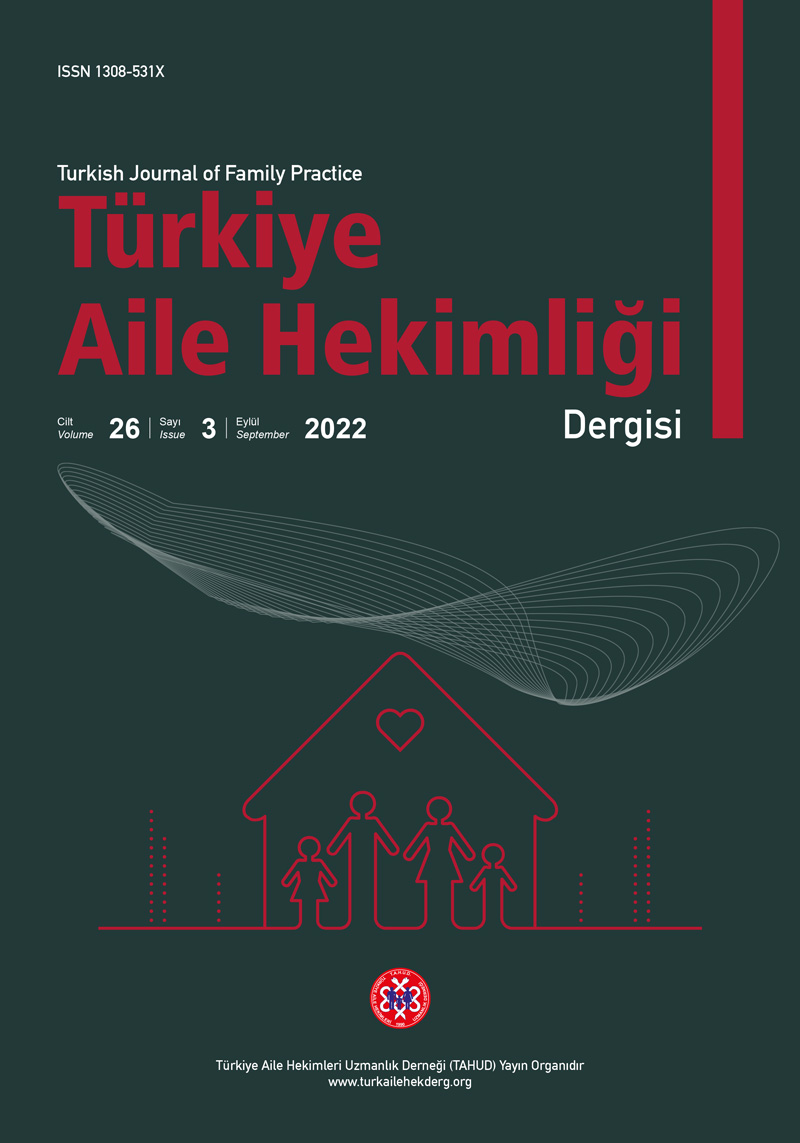Öz
Amaç: Sağlık hizmetleri gereksiniminin arttığı pandemi döneminde risk altındaki grupların belirlenmesi mortalite ve morbiditenin önlenmesinde, ihtiyaç olacak hasta ve yoğun bakım yatağı, ekipman ve personel organizasyonunda önemlidir. Çalışmamızda, hastanede yatan yoğun bakım gereksinimi olan ve olmayan COVID-19 tanılı hastalar arasında kronik hastalıklar, demografik veriler ve laboratuvar tetkikleri yönünden farkın değerlendirilmesini ve yoğun bakım gereksinimini etkileyen faktörleri araştırmayı amaçladık.
Yöntem: Çalışma retrospektif kesitsel bir araştırma olup, çalışmaya 01.11.2020-31.12.2020 tarihleri arasında eğitim ve araştırma hastanesi pandemi servisinde yatan COVID-19 tanılı 256 hasta dâhil edilmiştir. Hastalar yoğun bakım gereksinimi olan ve olmayan olmak üzere iki gruba ayrılmıştır. Yoğun bakım gereksinimi ile demografik veriler, kronik hastalıklar ve laboratuvar verileri arasındaki ilişki ve gruplar arası farklar incelenmiştir. İstatistiksel analizler ve hesaplamalar için IBM SPSS Statistics21.0 (IBM Corp. Released 2012. IBM SPSS Statistics for Windows, Version21.0. Armonk, NY: IBM Corp.) kullanılmıştır. p<0,05 istatistiksel anlamlılık düzeyi olarak kabul edilmiştir.
Bulgular: Çalışmaya katılan hastaların yaş ortalaması 63.36±14.18 (22-94) yıl olup, %60,5’i erkektir. Yoğun bakım gereksinimi olanlarda erkek cinsiyet, yaş ortalaması, kan üre azotu (BUN), kreatinin, Aspartat aminotransferaz (AST), C-Reaktif Protein, uluslararası düzeltme oranı (INR), Laktat dehidrojenaz (LDH), ferritin, D-dimer değerleri yoğun bakıma gitmeyenler göre istatistiksel olarak anlamlı daha yüksek, lenfosit sayısı daha düşük saptanmıştır. Astım-KOAH, yaş, cinsiyet, LDH yoğun bakım gereksinimini pozitif yönde, lenfosit ve hastanede kalış süresi ise negatif yönde yordamaktadır.
Sonuç: Çalışmamızda, ileri yaş, erkek cinsiyet, Astım-KOAH varlığı, trombosit sayısı ve laktat dehidrojenaz artışı, lenfosit sayısının azalması yoğun bakım gereksinimi açısından risk faktörü olarak saptanmış olup, yatan riskli hastaların genel durumu ve laboratuvar verilerinin daha yakın takibi ile yoğun bakım gereksinimi azalabilir.
Anahtar Kelimeler: SARS-CoV-2, yoğun bakım, kronik hastalık
Telif hakkı ve lisans
Telif Hakkı © 2022 Yazar(lar). Açık erişimli bu makale, orijinal çalışmaya uygun şekilde atıfta bulunulması koşuluyla, herhangi bir ortamda veya formatta sınırsız kullanım, dağıtım ve çoğaltmaya izin veren Creative Commons Attribution License (CC BY) altında dağıtılmıştır.










